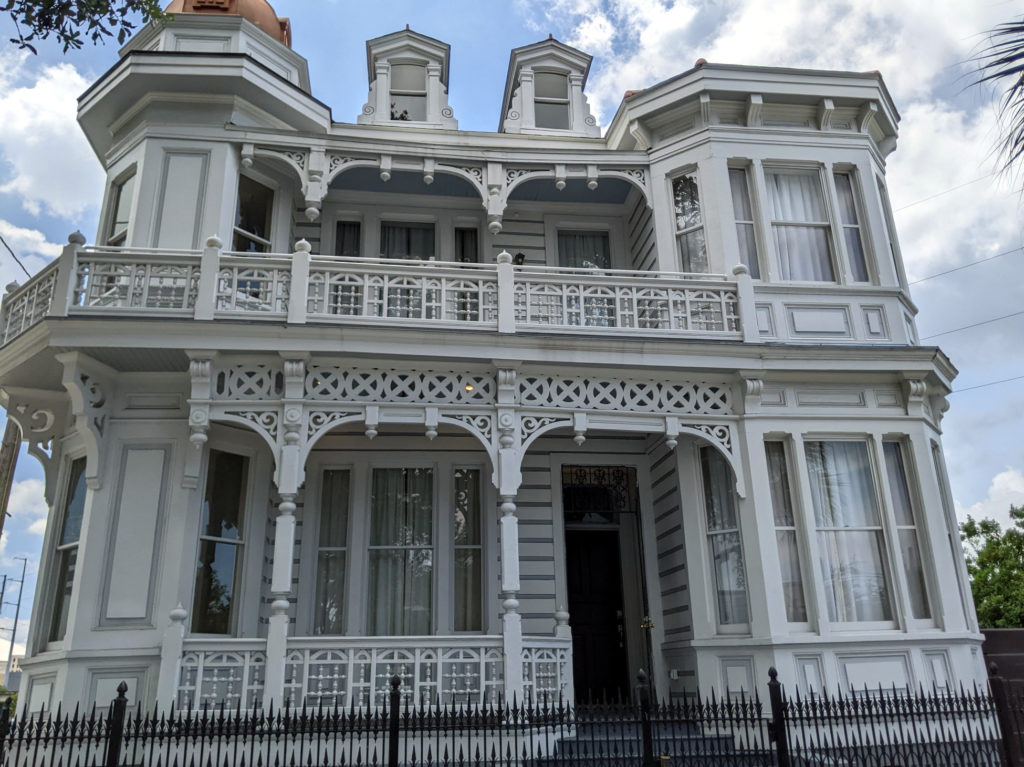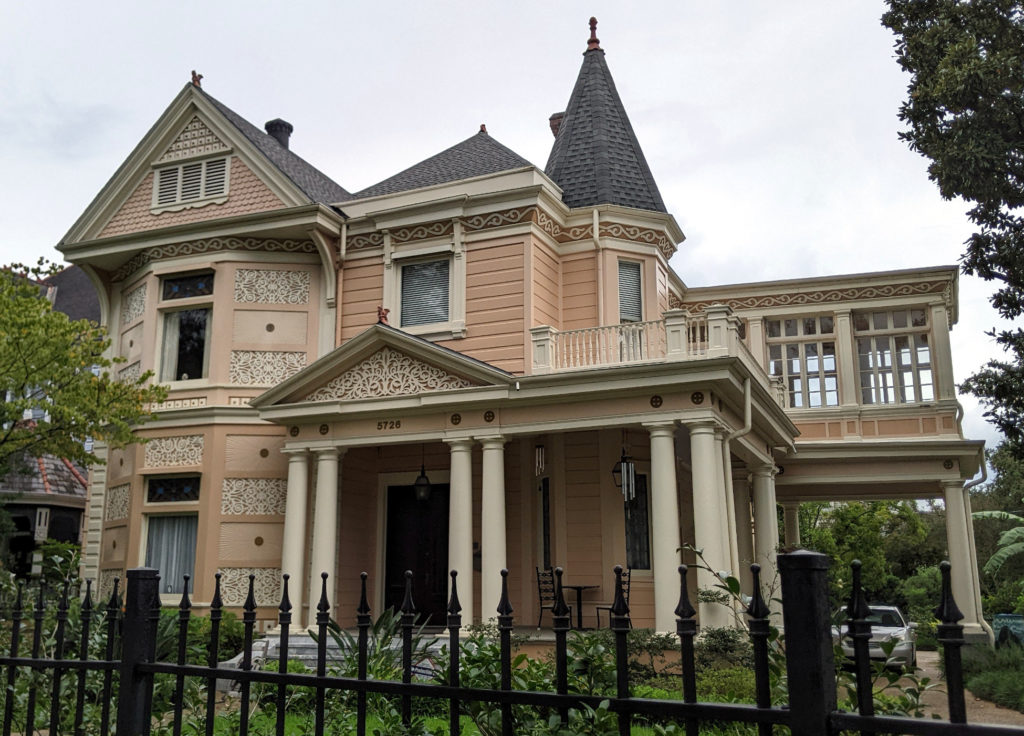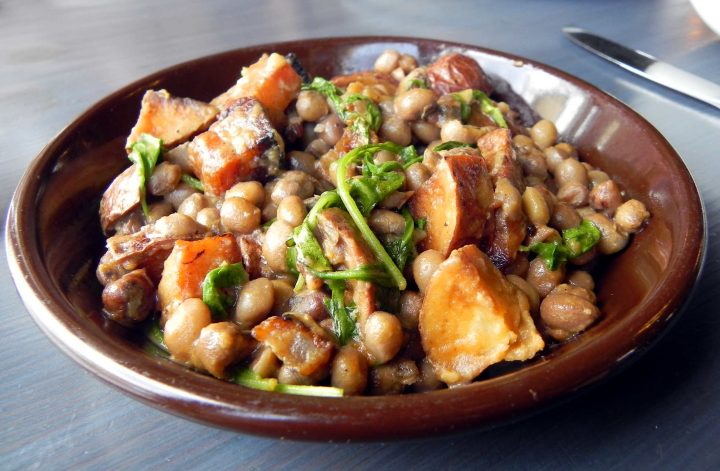What is it about a Victorian home which makes it the perfect setting for ghost stories and horror films? They’re used prolifically across the spookiest of genres, in everything from Scooby Doo and House to The Addams Family and Alfred Hitchcock’s Psycho. Some might proclaim it’s peculiar features including fairy tale-like towers, intricate gingerbread details, scalloped siding, and decorated apexes of steep, towering roofs make for the perfect, fantastical backdrop. Added to that, Victorian-style houses typically have an asymmetrical layout with small wings and added stories jutting out every which way you look, a visual effect which tends to make people uncomfortable.
Another reason for their unusual eeriness could stem from the era itself. The Victorian era is formally marked by Queen Victoria’s reign in England, a period that stretched from 1837 to 1901. Many things occurred during this time making it one of the most macabre in history, beginning with the Queen herself who was so crushed by the death of her husband Prince Albert (1861), she withdrew from the public and went into mourning for ten years. She wore black mourning dresses for the remainder of her life. At the time, it was also fashionable for ladies of the court to imitate their ruler’s garb, so everyone was wearing black.
Donning black wasn’t the only grim fashion. The latter part of the Victorian era coincided with the Industrial Revolution’s peak in both England and the United States, a time of great discovery and, as an unfortunate side-effect, an unusually high mortality rate. Radium was discovered in 1898 and it’s glowing properties convinced the unwary of it’s supposed miraculous healing abilities. Before its deleterious effects were realized, manufacturers were using it in everything from toothpaste and hair cream to glassware. Another deadly discovery was the invention of “Scheele’s green,” a pigment created by a Swedish chemist made with copper arsenite. Textile manufacturers went ga-ga over the color and it was incredibly hip to have this bright green, arsenic-laced color in your wallpaper and drapes in the 19th century.
Due to the high mortality rate, people in the Victorian era also possessed an uncanny fascination with death and the afterlife. For example, photography was invented in 1822 and posing and taking pictures with your recently-dead relatives was the hip thing to do, particularly among the wealthy. Interestingly enough, because it took so long to take a picture in those early days, faces are always blurry, except the faces of the dead who had no difficulty sitting still. Another ghastly trend in high society were mummy unwrapping parties, where ancient trinkets found in Egyptian wrappings were handed out like party favors while amateur scientists desecrated the dead.
As if that wasn’t enough, the Victorian era was rife with infectious diseases. So many people, and especially their children were already dying of age-old, common illnesses such as smallpox, tuberculosis, and the flu, that when cholera hit, bodies were piling up faster than they could be interred. It was so terrible, over 50% of children died before the age of five. Death was, sadly, de rigeur until we realized the value of clean drinking water and effective sanitation.
What does all this have to do with the seemingly inherent spookiness of Victorian houses? Maybe our fascination with death during this time somehow became imbued in the architecture? Or perhaps it all stemmed from one person’s imagination, creating an ominous, chilling fiction from the abandoned Victorian house sitting at the end of his block.
Though your particular dream home may be something a bit more modern, it’s hard to deny the unique elegance and opulence of Victorian-style buildings, and their mysterious and uncanny characteristics which make them all the more interesting. In New Orleans Victorian architecture flourished from the 1870s to the 1900s. Examples of these types of extravagant homes can be found all over the city, setting a sharp contrast to the Creole townhouses and cottages of the French Quarter. Here’s just a scant few, among many, worth pulling over or jumping off the streetcar for a closer look.

1800 Canal Street – The Orleans House
Sitting alone on the corner of Canal and N. Derbingy, long derelict and surrounded by commercial buildings like industrial supply store Fastenal and used car lots, the colorful Queen Anne Victorian has been repaired and renovated. Now in all white, like a blushing bride, this lone beauty has begun a new life as a kind of whole-home AirBnB. Locally known as the Chateau D’Arcy, the house at 1800 Canal Street is a gorgeous Queen Anne with some Second Empire thrown in for good measure. Built in 1879 by the twice-widowed Jane D’Arcy, the building was originally intended as a high end ice cream saloon for ladies only. Today, the building can be rented, in it’s entirety, on Booknightly.com for $1,500 a night. The “hotel room” sleeps 16 featuring eight bedrooms, eight bathrooms, and an outdoor pool.

4125 St. Charles Avenue – The Chloe
A couple of years ago, in October 2020, the LeBlanc + Smith hospitality group renovated a 19th century mansion on St. Charles Avenue and launched The Chloe, a 14-room boutique hotel replete with swimming pool, bar and restaurant. Located in the Milan neighborhood, The Chloe was originally built in 1900, right at the end of the Victorian era by famous local architect Thomas Sully. Though a lot has changed in the renovation of this historic gem, many of the original features still remain from the elaborately carved wooden banister and wainscoting to the scalloped siding and keyhole mill work. Luckily, you don’t have to reserve a room to enjoy the stunning architecture. Feel free to grab a drink at the bar (overhung by a stunning wood-coffered ceiling) or enjoy lunch a la Chef Todd Pulsinelli in the hotel’s eponymous restaurant.

2727 St. Charles Avenue – Grand Victorian Bed & Breakfast
Designed and built in 1893 by, you guessed it, locally renowned architect Thomas Sully, this Queen Anne is now the Grand Victorian Bed & Breakfast. One of the few licensed B&Bs in the Garden District neighborhood, the inn features six guest rooms, three larger suites, and a front row seat to all of the Mardi Gras parades that roll down St. Charles Avenue. The Grand Victorian was originally built as a private home for Francis Johnson, a successful local undertaker who owned most of the block, as well as a lot of other property in the city. Unfortunately, Johnson died only a few years after the house was completed and was buried in Lakelawn Cemetery. In the 1950s, the house was purchased and broken up into apartments, but the structure began to decay and was abandoned for many years. In 1997, Bonnie Rabe purchased the derelict building and took great pains to lovingly restore the home to its former glory and fill it with antique furnishings from the period. Like many historic properties in New Orleans, the Grand Victorian is reputedly haunted be several entities, most notably Mr. Johnson himself who loves to sit in front of the fireplace in the parlor. There’s also a female ghost who appreciates the inn’s genial caretaker Hoyt Dottry, but likes to play tricks on anyone else who might be working on the house.

4032 Prytania Street
Built in 1850, this Queen Anne stunner gets folks a-gawking every time they drive by. Though the residence has been sectioned out into apartments, and it’s been through some pretty rough times as is evidenced by its multi-hued roof and lackluster paint job, it’s hard not to stop and stare at the three-story, double gallery tower that faces the corner of Prytania and Margeno streets. A lot may have changed on the inside, but the exterior begs to be photographed with a multitude of dormers, steep, peaked roofs, intricate mill work and ornamental cresting and cladding.

5726 St. Charles Avenue & 5728 St. Charles Avenue
These neighboring Queen Anne Victorian homes bear a marked resemblance, as they should considering both the Pink Lady and the Blue Lady were built and designed in 1889 by architect Louis Lambert. Though the Blue Lady is currently undergoing some serious renovations, the Pink Lady stands in all her grace sporting a peaked tower, elaborate lace-like mill work and even a gargoyle atop the entryway pediment. The Pink Lady looks awfully innocent in her peachy hues and lacy trim, but who knows what lurks inside?
*Article published in the 2022 Halloween issue of Where Y’at Magazine



